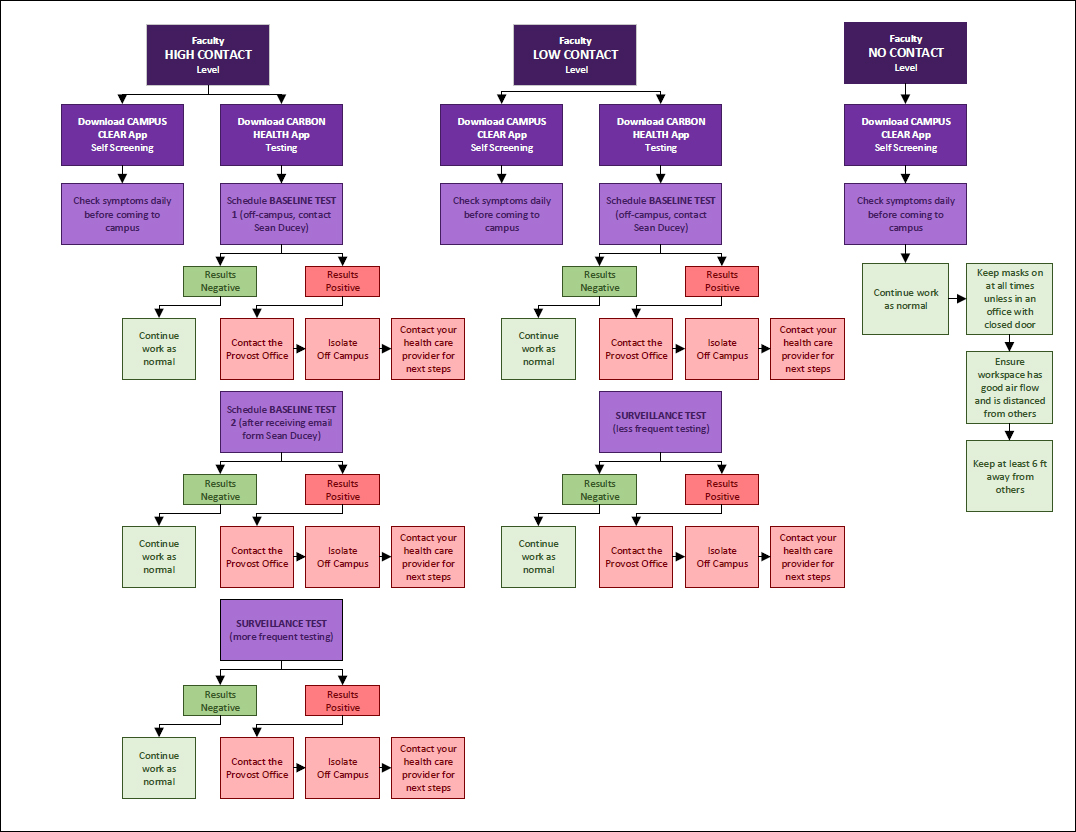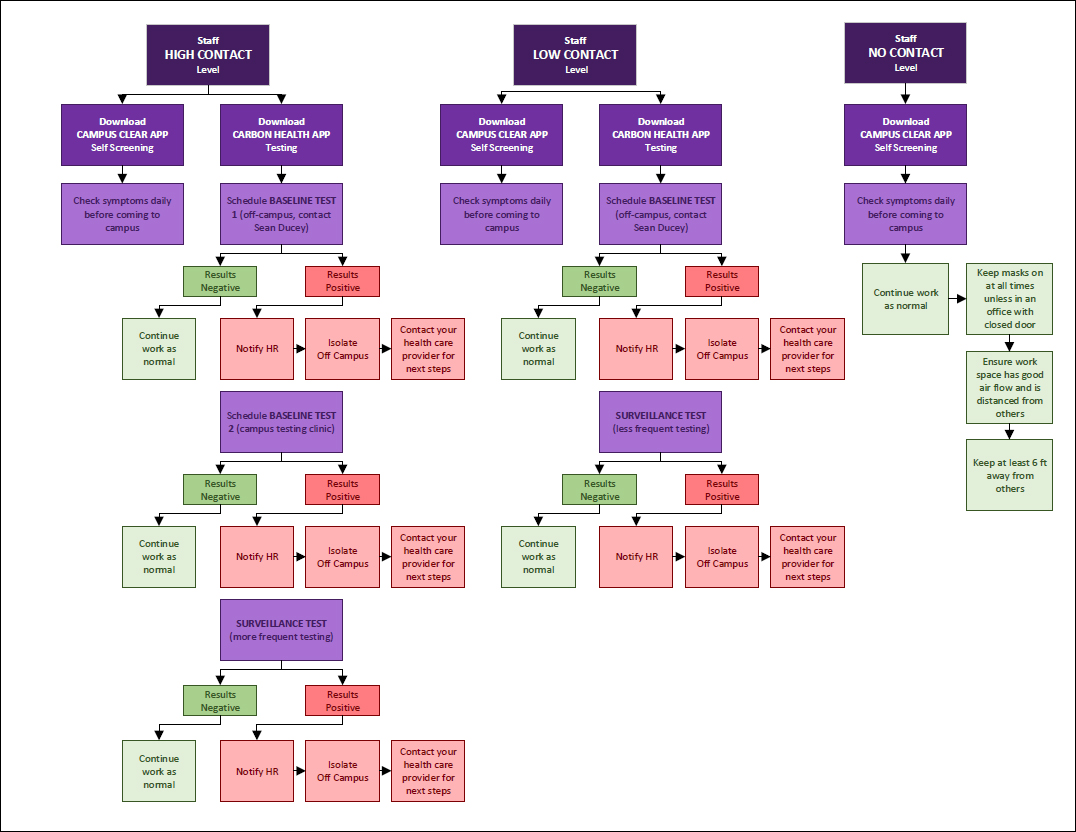
Pilots Prevent
Human Resources
January 26, 2021
University of Portland officials have been working hard to construct detailed plans that allow faculty to teach in person, students to have an in-person experience, and staff to support the operations of the campus—all while keeping COVID-19 at bay. They’ve consulted with the Oregon Health Authority and the Multnomah County Health Department, and studied guidelines published from the Centers for Disease Control and the American College Health Association, to come up with detailed prevention protocols for spring semester as some students return to campus.
But sometimes those plans can seem confusing. That’s where these COVID testing flow charts come in.
Faculty Testing Flow Chart (images) | Faculty Testing Guide (text)
Staff Testing Flow Chart (images) | Staff Testing Guide (text)
In early January, all staff and faculty received a letter detailing the four employee designations—high contact, low contact, no contact, and exclusively remote—and the symptom tracking and testing protocol that applies to each one. The designations were made in partnership with each employee’s vice president and are based on how often each employee will be in proximity to others. These flow charts essentially put that letter in picture form.
“We know it’s a lot of information. We created the charts because we want folks to be clear about expectations for symptom tracking, also known as screening,” says Dr. Matt Rygg, associate vice president for student development, “and we wanted to explain the difference in testing protocols and when and who to contact, in the event of an exposure or positive case.”
”We knew that a robust testing program would be the cornerstone to resuming campus life during a pandemic. While we all need to do our part in preventing the spread of COVID-19, we hope our screening and testing program offers students, staff, and faculty some peace and confidence as they resume living and learning on The Bluff.”
As the charts show, high- and low-contact employees will be expected to take periodic surveillance tests throughout the semester. Those employees have all been invited to participate through the testing partner Carbon Health—a leader in the COVID testing industry. The frequency of testing, however, depends on which pod, or group, they’ve been assigned to, based on various factors.
“Students, staff, and faculty that require surveillance testing have all been put into pods based on where they live, where they work on campus, and what kinds of activities they’re doing,” says Rygg. “People in the high contact groups can expect to undergo surveillance testing more often.”
Every week, various members of the pods are requested to undergo Carbon Health’s surveillance testing in the Lund Family Annex across from the Chiles Center. “The idea of surveillance testing is not to test everyone, but to survey the campus in terms of COVID-positive cases,” says Rygg. It’s what’s called a stratified random sampling methodology. About 540 people are tested weekly, which will continue for 14 weeks. Testing is a rapid, molecular test of specimens collected through a mid-turbinate or anterior nares swab. It takes five minutes and results are ready in 15.
“It gives us the highest degree of confidence while ensuring a comfortable experience,” says Rygg, “and we have the luxury that results are almost immediate.”
By now, high- and low-contact employees should have had their first baseline test. High contact employees will need a second baseline test, which they’ll be invited to do on this week. Low contact employees won’t need a second baseline test, but if they didn’t even get their first one off-campus, they should reach out to Sean Ducey as soon as possible. “There may be a few spots open this week to slide them in,” says Rygg.
Although it’s recommended to block off 30 minutes for testing in case there’s a short line, more often than not people are in and out in minutes. “It’s been really smooth so far,” says Rygg. “Everybody has reported it’s been a seamless experience.”
University of Portland
5000 N. Willamette Blvd.,
Portland, Oregon 97203-5798
503.943.8000
This website uses cookies to track information for analytics purposes. You can view the full University of Portland privacy policy for more information.


